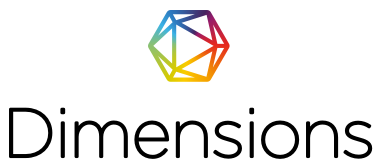Busana Ready to Wear Deluxe Menggunakan Pewarnaan Alam Ampas Kopi dan Kombinasi Slashing Kain Batik Kopi Pecah Banyuwangi
DOI:
https://doi.org/10.26740/baju.v5n2.p200-210Keywords:
coffee grounds waste, slashing technique, Banyuwangi broken coffee batikAbstract
The fashion industry is currently looking for more environmentally friendly alternatives. This research aims to describe the process of making Ready-To-Wear Deluxe clothing with the innovative use of natural dyes from coffe grounds and a combination of slashing techniques on Banyuwangi broken coffee batik cloth. The use of natural coloring from coffee grounds as an alternative to synthetic dyes and a combination of slashing techniques on Banyuwangi broken coffe batik cloth provide added value to the final product. This research applies the FEA Consumer Needs Model method to identify the Functional, Expressive, and Aesthetic that consumers most seek in this product. The uniqe Ready-To-Wear Deluxe fashion product can contribute to the development of a sustainable fashion industry by utilizing the potential of local natural resources from the natural color characteristics of coffee grounds and also the attreactive modern aesthetic appearance of slashing techniques with traditional values. Apart from that, this research will analyze the final results of clothing produced from a combination of these techniques and materials. The research results can be used by designers of manufacturers to create products that not only meet functional needs, but also provide emotional and social value for consumers.
Downloads
References
Hendriyana. (2022). metodologi penelitian penciptaan karya. https://books.google.co.id/books?hl=id&lr=&id=tg1vEAAAQBAJ&oi=fnd&pg=PP1&dq=hendriyana+2022&ots=l_o3CkiuSs&sig=v6xV_TKhgoYGx1aZBBtJtK3YY8I&redir_esc=y#v=onepage&q=hendriyana 2022&f=false
Hernani, H., Risfaheri, R., & Hidayat, T. (2017). Ekstraksi Pewarna Alami Dari Kayu Secang Dan Jambal Dengan Beberapa Jenis Pelarut. Dinamika Kerajinan Dan Batik: Majalah Ilmiah, 34(2), 113. https://doi.org/10.22322/dkb.v34i2.2932
Indarti, D. A. N. (2020). Journal of Fashion & Textile Design Unesa. 1, 128–137.
Maria Natasya, T. W. (2022). Pakaian Modular Menggunakan Teknik Manipulating Fabric. Da Moda, 4(1), 10–20. https://jurnal.idbbali.ac.id/index.php/damoda
Orzada, B. T., & Kallal, M. J. (2016). Vancouver, British Columbia. 1992, 1–2. https://doi.org/10.1080/17543266.2015.1026411
Orzada, B. T., & Kallal, M. J. (2019). FEA Consumer Needs Model: 25 Years Later. https://journals.sagepub.com/doi/10.1177/0887302X19881211
Pamuja, B. (2014). BAWARNA: Pemanfaatan Limbah Ampas Kopi Menjadi Pewarna Alami. BAWARNA. https://issuu.com/bonipamudja/docs/buku_publikasi_2
Purwanto, A. (2024). Mengapa Kafe dan Kedai Kopi Kian Marak di Indonesia? Kompas. https://www.kompas.id/baca/riset/2024/08/15/mengapa-kafe-dan-kedai-kopi-kian-marak-di-indonesia
Qiram, I., & Rubiono, G. (n.d.). Pelestarian Budaya Batik Banyuwangi. 113–140.
Teknologi, J., Dan, B., & Nur, P. (2020). Pembuatan Surface Design pada Busana Ready to Wear dengan Teknik Sashiko. 8(1), 62–69.
Utilization, T. H. E., Coffe, O. F., As, P., Dyes, T., Dyning, W., Techniques, B., Ampas, P., Sebagai, K., Tekstil, P., & Teknik, D. (2021). Arty : Jurnal Seni Rupa The Utilization Of Coffe Passes As Textile Dyes With Dyning Background Techniques. 10(1), 45–52.
Downloads
Published
How to Cite
Issue
Section
 Abstract views: 373
,
Abstract views: 373
, PDF Downloads: 287
PDF Downloads: 287





.png)


